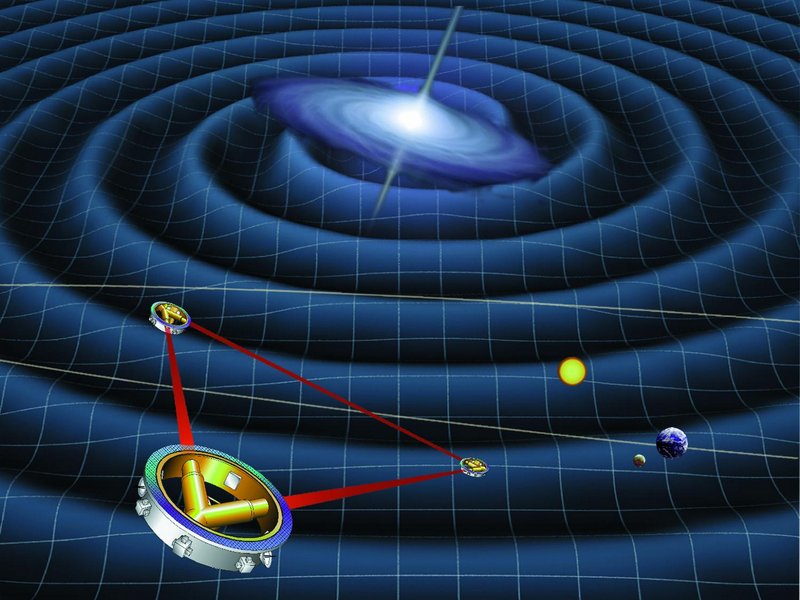
NASA illustration of LISA–spacecraft that will form an extremely large antenna array for detecting gravitational waves.
Many thanks to SWLing Post reader, Dan H, who writes:
The biggest news during the last week is not the Republican or Democratic national party debates, the surrender of the last Militia Man at Malheur National Wildlife Reserve in Oregon or falling stock prices for Tesla. The biggest story of the week involves some lasers enclosed in huge vacuum tubes.
The recent proof for gravity waves is something that should have a lot of appeal to readers of SWLing Post. This story involves very weak waves originating billions of years ago, measuring distances with lasers and old-style vacuum tube tech (albeit four 2.4 mile-long tubes located 1,900 miles apart). It sounds like DXing to me and DXing is interesting. But, this story describes changes in spacetime and that is really significant.
I get it, at least on a layman basis. I think that many SWLing Post readers would get it too.
This link to an older article is the best that I can provide to describe it all. The recent discoveries involved LIGO sites in Hanford, Washington and Livingston Parish, Louisiana.
http://www.nola.com/environment/index.ssf/2013/05/ligo_captures_gravitational_wa.html
I heard over 90 minutes of programming on this subject during the last seven hours from BBC. I heard it locally on SW in northern California at 7445 and 9740 kHz. The programs were featured on the Newsday and Science Day BBC programs. Yes, I was listening to two different BBC relays from different parts of the world on my apparently outdated and uncool Sangean ATS-909X.
You’re right, Dan! I had planned to post an item about this, but have been been a bit behind due to travels. I believe you can’t find any weaker DX than gravitational waves from distant colliding black holes! It’s a fascinating idea, too, to use a laser antenna to detect these waves across space/time.
I also enjoyed this article and video from the New York Times.
Oh, and regarding your Sangean ATS-909X? I think it’s one of the coolest looking portables on the market! Glad to hear it’s serving you well.
Thanks for sharing, Dan!

Well, what I want to know is can these gravtational waves be modulated and used for communications? I can’t be the only one thing of this. Wouldn’t this make for the ultimate DX, DX’ing from other solar systems.
I think that’s he exciting bit. I’ve often said that there may be a better communications system across space and time–we just haven’t found it yet. Perhaps when we build the right receiver, with the right “mode,” we’re hear signals galore from other solar systems!
That’s why I think quite critically about SETI, we developed digital modulation schemes, spread spectrum technology and wideband whatnots to create extremely robust and power efficient signals that can hide below the noise and still be demodulated in insane distances, and SETI waits for stupid hillbilly ET investing a world’s output of energy to transmit a narrowband knockknock through space.
I’m not sure but perhaps they just picked up the gravitational waves I emit after getting quite some belly from all the good x-mas food and a terrible lack of exercise due to my revitalized interest in SWLing with a new interest in higher frequencies and all. 🙂
Ha ha! Thanksgiving was the culprit here! 🙂
Thanks for passing along the gravitational wave story, Thomas. The New York Times story and video were excellent. I didn’t see those previously. The Sangean ATS-909X has been a great little radio. It does a fine job for me with a 106′ random wire antenna but I’m not done playing with antennas yet.